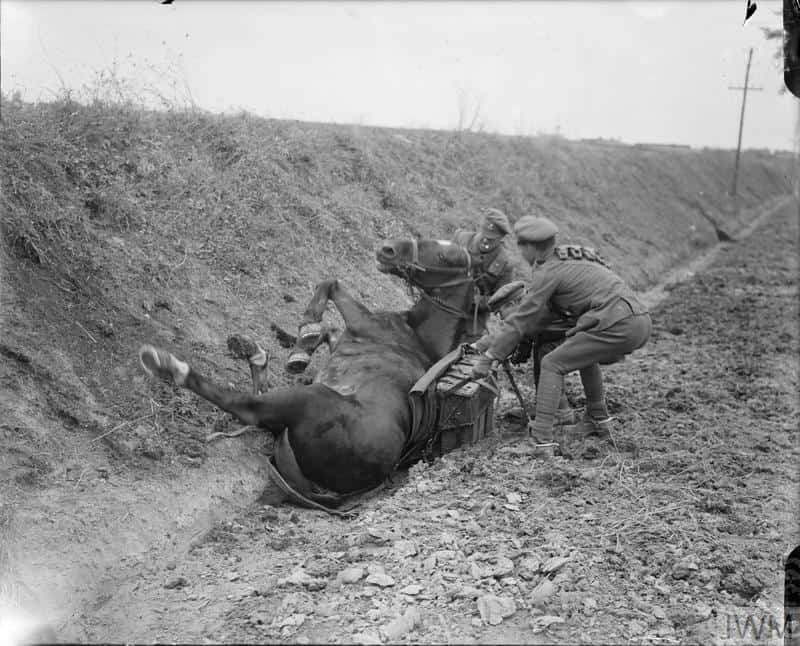Gheluvelt
In 1914 the Germans invaded France. Their aim was to overwhelm the French and British Armies, bypass Paris and seize the Channel Ports. Only the British Army remained, at Ypres, to stem the advancing Germans and save the Channel Ports and Paris. The crisis of the Battle of Ypres hinged around the village of Gheluvelt. Lying on a forward spur of the low ridge that covers the town of Ypres, Gheluvelt was the last point retained in British hands from which the enemy’s line could be dominated.
The Honour was awarded to the 3rd Hussars.
Detail
When the 3rd Hussars fell back from Warneton, on the evening of the 20th of October, they found the 5th Cavalry Brigade hard at work entrenching astride the Gapaard-Oosttaverne road. The regiment was ordered to extend the line towards Messines, and in pitch darkness, they fumbled their way through the deep mud until they met a squadron of their comrades in the Composite Regiment of the Household Cavalry.
Then, digging in with what implements they could find, and cutting down fences to make wire entanglements, they endured two nights and days of almost continuous shelling, until they were relieved by Wilde’s Rifles.
Another small reinforcement of twenty-six men and horses had joined them at Wytschaete, but the regiment was so weakened that it had to be reorganised into two squadrons each of six troops, so that the men should not be in the firing line for more than twelve hours at a stretch, with twelve in support and twelve in reserve.
Early on the 30th of October, the 3rd Hussars and one regiment from each of the other two brigades of their division were hurried from Wytschaete to Klein Zillebeke, in support of the 3rd Cavalry Division, then being heavily attacked at Zandvoorde.
They left their horses in the rear and were soon taking part in a counter-attack to recapture a wood just west of Zandvoorde. The regiment suffered few casualties as they approached the wood, but during the next few hours, they were heavily shelled and lost almost their men in the firing line.
When they withdrew on relief by the Irish Guards, one officer and 3 men were dead, 5 officers and 27 NCO’s and men had been wounded, and 21 men were missing.


